
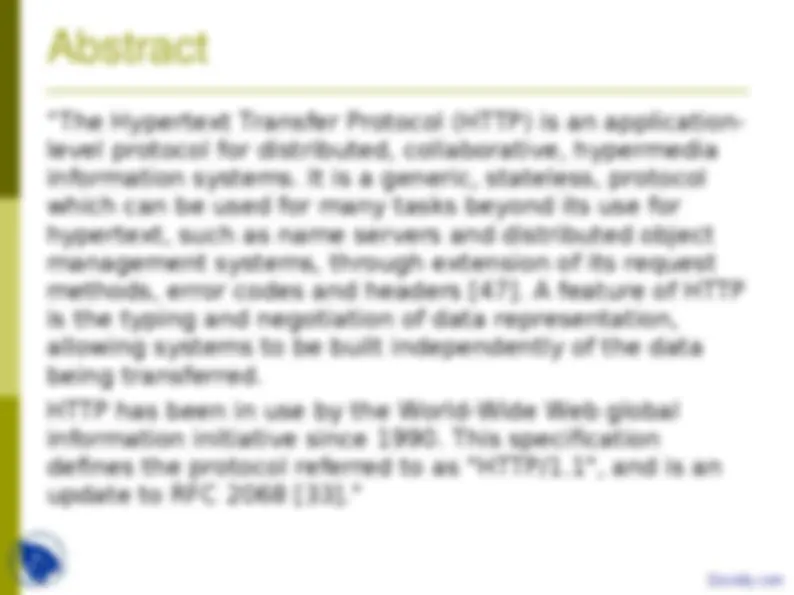
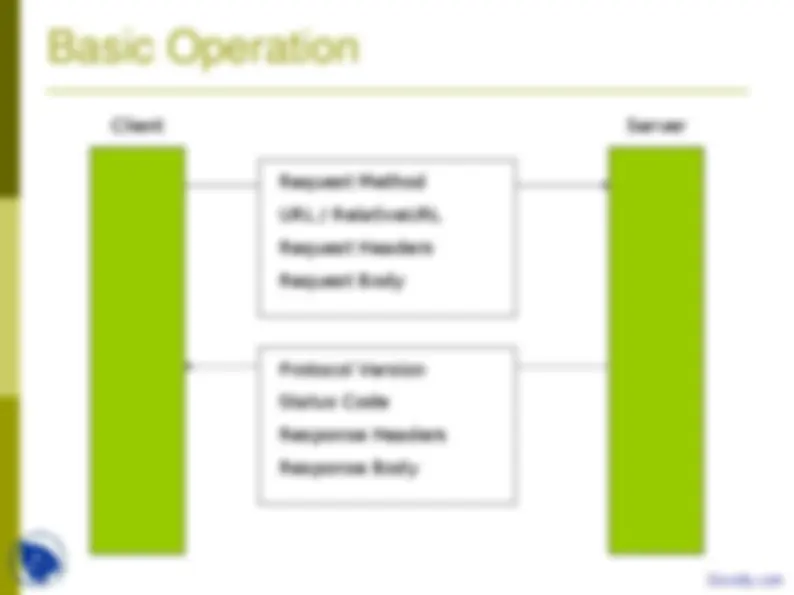
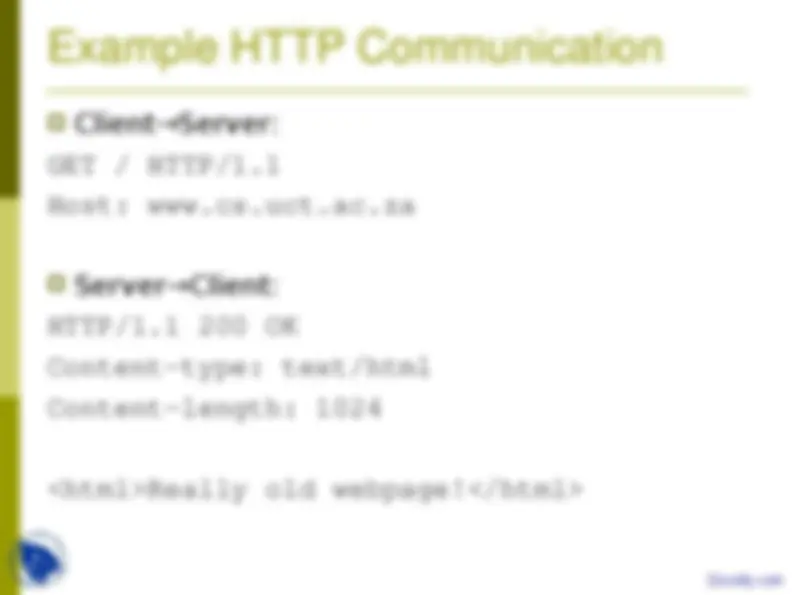

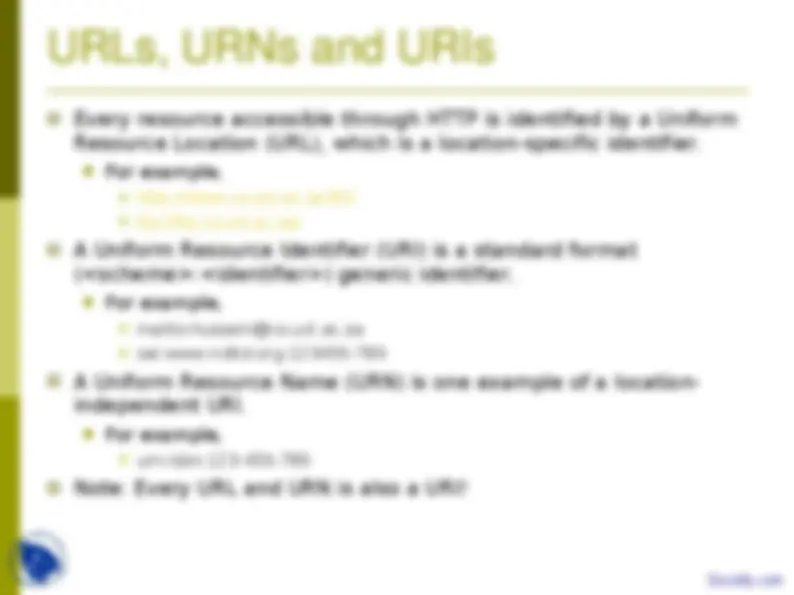
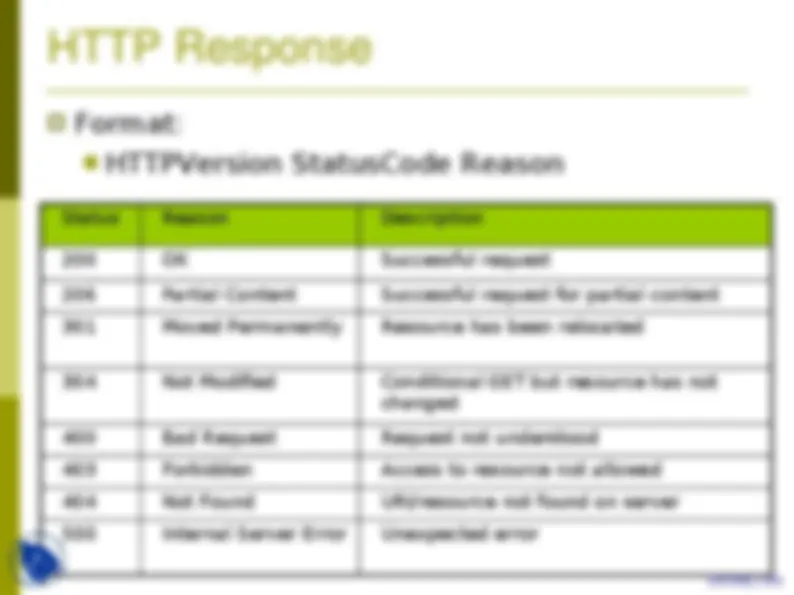
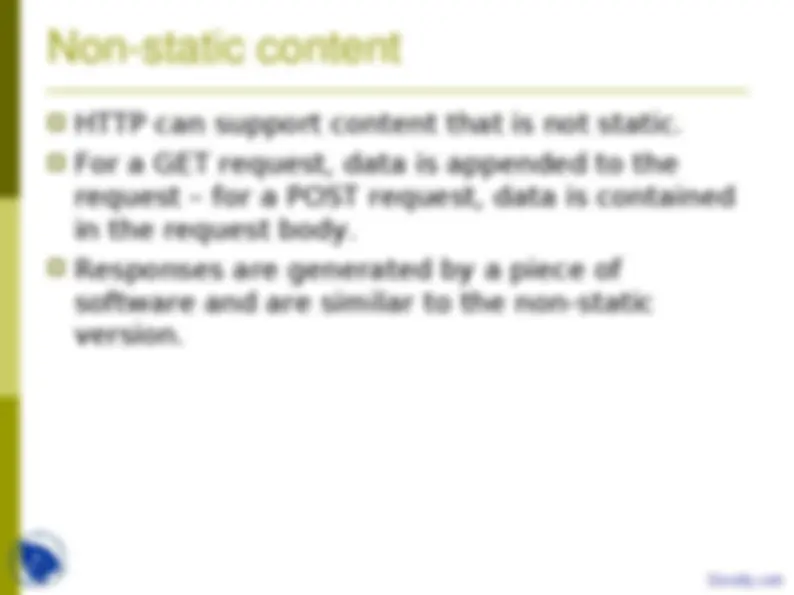
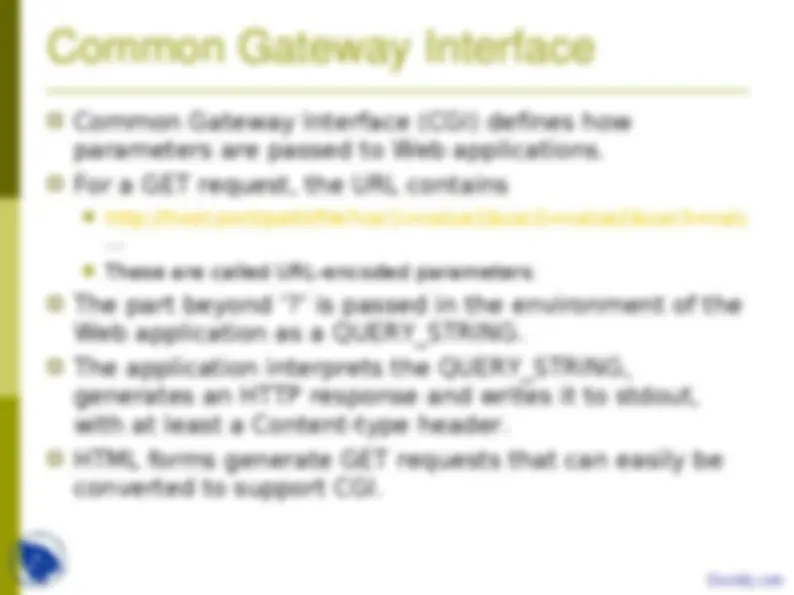
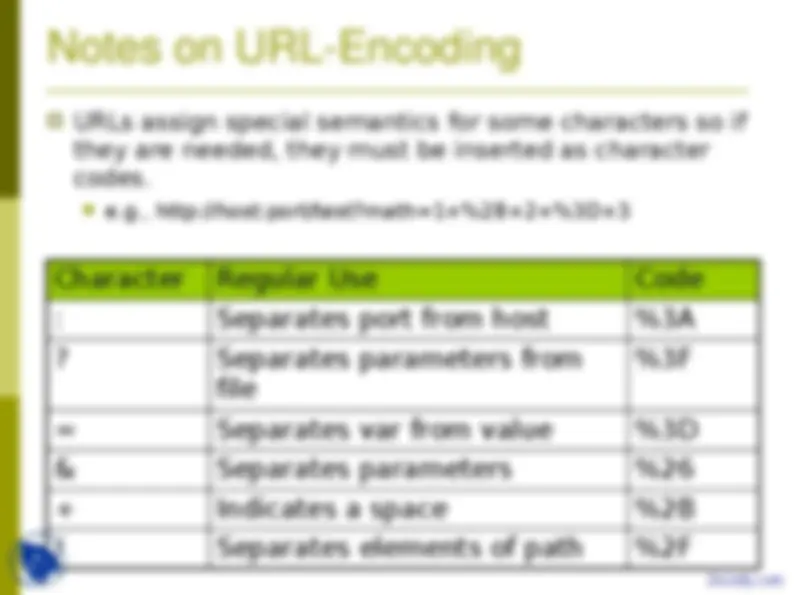


Study with the several resources on Docsity

Earn points by helping other students or get them with a premium plan


Prepare for your exams
Study with the several resources on Docsity

Earn points to download
Earn points by helping other students or get them with a premium plan
Community
Ask the community for help and clear up your study doubts
Discover the best universities in your country according to Docsity users
Free resources
Download our free guides on studying techniques, anxiety management strategies, and thesis advice from Docsity tutors
An overview of http (hypertext transfer protocol) version 1.1, a protocol used for transferring data between web servers and clients. It covers the basic operation of http, popular web servers and clients, and the format of http requests and responses. The document also discusses http headers, status codes, and features such as authentication, persistent connections, and content type negotiation.
Typology: Slides
1 / 17

This page cannot be seen from the preview
Don't miss anything!










Client Server
Request Method URL / RelativeURL Request Headers Request Body
Protocol Version Status Code Response Headers Response Body
Status Reason Description 200 OK Successful request 206 Partial Content Successful request for partial content 301 Moved Permanently Resource has been relocated
304 Not Modified Conditional GET but resource has not changed 400 Bad Request Request not understood 403 Forbidden Access to resource not allowed 404 Not Found URI/resource not found on server 500 Internal Server Error Unexpected error
(^) Accept: Indicates which data formats are acceptable. (^) Accept: text/html, text/plain (^) Content-Language: Language of the content (^) Content-Language: en (^) Content-Length: Size of message body (^) Content-Length: 1234 (^) Content-Type: MIME type of content body (^) Content-Type: text/html (^) Date: Date of request/response (^) Date: Tue, 15 Nov 1994 08:12:31 GMT (^) Expires: When content is no longer valid (^) Expires: Tue, 15 Nov 1994 08:12:31 GMT (^) Host: Machine that request is directed to (^) Host: www.cs.uct.ac.za (^) Location: Redirection to a different resource (^) Location: http://myserver.org/ (^) Retry-After: Indicates that client must try again in future (^) Retry-After: 120
-----------------------------41184676334 Content-Disposition: form-data; name="var1" something ----------------------------- Content-Disposition: form-data; name="var2"; filename="testpost.html“ Content-Type: text/html
-----------------------------41184676334--recursive example if you fill in the form embedded here, this is the data that gets sent to the server
Not-So-Common Gateway Interfaces